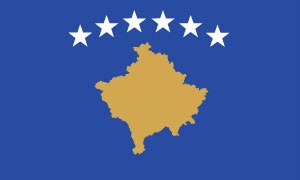Country assessments
Kosovo
- Details
- Country assessments
2013 sector transition indicators
Source: EBRD.
Note: Water – Water and wastewater; IAOFS – Insurance and other financial services; PE – Private equity.
Highlights
- Strong macroeconomic stability has been maintained. The rate of growth in Kosovo remains faster than in neighbouring countries, inflation is low, and good fiscal discipline is being maintained within the context of an International Monetary Fund (IMF) programme.
- Negotiations have begun on a Stabilisation and Association Agreement (SAA) with the European Union. This is an important first step towards the country’s long-term goal of integration into the European Union (EU).
- Progress has been made in improving the business environment. The authorities have carried out concrete steps to reduce the regulatory burden on businesses, but significant problems remain.
Key priorities for 2014
- Progress on privatisation needs to be accelerated. Achievements in this area would help to attract fresh capital and skills, as well as much-needed improvements in management expertise and corporate governance.
- Private sector involvement should be sought in infrastructure improvement. While the state’s room for further spending is severely limited, the quality of most infrastructure is sub-standard and requires urgent improvement. A more commercial approach to infrastructure services should be adopted.
- Energy sector reforms should be implemented. The legal and institutional framework that is necessary to support energy efficiency measures and small renewable projects is present, but implementation needs to be accelerated.
Macroeconomic performance
Economic growth has moderated in the past year. Kosovo’s economy had been largely shielded from adverse external developments over the past few years, due to relatively weak direct trade and financial linkages with the crisis-affected countries. The economy continued to grow at a robust 3 per cent in 2009, when most countries in the region were in recession, and the country has continued to record the highest economic growth in the south-eastern Europe region. However, GDP growth moderated in 2012 under the impact of the eurozone crisis. Available indicators for 2013 suggest that both domestic and external demand, as well as the large fall in foreign direct investment, have contributed to this moderation. Inflation has been declining throughout 2013, standing at 2.6 per cent year-on-year in June. Credit growth has been decelerating throughout the year, and was down to 3.8 per cent year-on-year in May 2013, from 14 per cent year-on-year at the end of 2011. Remittances have maintained a relatively constant level, but are growing at a slower pace than in previous years.
Fiscal policy has been relatively prudent. In light of the country’s unilateral adoption of the euro, and its limited access to debt markets, the continuation of a prudent fiscal policy has been critical for maintaining macroeconomic stability. Fiscal adjustment has been supported by the IMF since 2011. Following the successful completion of a Staff-Monitored programme between June and December 2011, the IMF approved a 20-month, €106.6 million, Stand-By Arrangement (SBA) for Kosovo in April 2012. The SBA aims to promote macro-financial stability, including fiscal sustainability and greater resilience of the financial system. External imbalances have increased this year, but this is largely due to temporary cross-border deleveraging shocks that are expected to subside in the next few years. Meanwhile, the current account deficit, while large by regional standards (around 8 per cent of GDP in 2012), is declining, financed in part by growing net foreign direct investment and remittance inflows.
Growth this year is likely to be similar to last year, with a slight increase expected in 2014. Output is forecast to be about 2.5 per cent in 2013, and is projected to rise slightly, to around 3.5 per cent in 2014. There are substantial downside risks, due to a range of internal problems, as well as ongoing difficulties in the eurozone.
Major structural reform developments
The opening this year of negotiations on a Stabilisation and Association Agreement with the EU will be a major step along Kosovo’s EU accession path. Since Kosovo’s independence in 2008, the EU has repeatedly stressed that Kosovo shares the EU perspective of its western Balkan neighbours. In a feasibility study, published on 10 October 2012, the European Commission concluded that, subject to the implementation of some concrete measures in the areas of rule of law, public administration, and the protection of minorities, Kosovo is largely ready to start negotiations on the SAA. In June 2013 an agreement reached between Kosovo and Serbia, under an EU-facilitated dialogue for normalising relations, further strengthened the case for Kosovo’s advancement in the accession process. On 28 June 2013 the European Council authorised the Commission to open negotiations with Kosovo on the SAA.
Considerable reforms have been implemented over the past year to strengthen the business climate. Over the past two years, Kosovo’s ranking has improved considerably in the World Bank Doing Business report, as a consequence of reforms aimed at reducing the regulatory requirements for starting a business, reducing the administrative burden associated with construction permits, and enhancing investor protection. Its ranking rose by 28 places in the 2013 report, and a further 10 places in the 2014 edition, which ranked Kosovo at eighty-sixth place, of 189 countries. Despite the recent reform progress many difficulties persist, and Kosovo remains one of the most challenging countries for doing business in the region. The high level of corruption is another factor that is discouraging investment in Kosovo. In the latest report by Transparency International, Kosovo was ranked one hundred and fifth of 176 countries.
The privatisation agenda remains unfinished. Many key, state-owned companies have still not been privatised, and many of the post-privatisation investment obligations remain unfulfilled. Over the past year, progress on this front has been limited, not least because of the weakening economic performance and heightened uncertainty over the near-term outlook, which has further dampened investor interest. The country’s privatisations are managed by the Privatisation Agency of Kosovo (PAK), which became operational in August 2008.
The state still plays a significant role in the energy and mining sectors. In the electricity sector, which is now fully unbundled, only the distribution company has been privatised, and most mining and extractive companies in the natural resources sector are still state-controlled. Kosovo has considerable potential to improve energy efficiency and increase the proportion of renewables in power generation. However, the implementation of the legal framework on energy efficiency and renewables is lagging. Significant investment is needed in power generation infrastructure, as nearly all domestically produced electricity comes from two old, inefficient and highly polluting lignite-fired power plants. Improvements are also needed in transmission infrastructure, particularly in increasing interconnection capacity, which is currently one of the key factors constraining imports. The present electricity tariffs are partly subsidised by the state, and are hence not reflective of costs.
Investment needs in the transport sector are high. Regional integration through high-quality transport infrastructure is critical for Kosovo, given the country’s small size and geographically landlocked position. However, limited progress has been made in advancing reforms in this sector in recent years. Road infrastructure is not being maintained properly due to inadequate funding. As a result, transport costs in Kosovo are among the highest in the region, and are a major deterrent to trade. Kosovo has restructured its railway, in line with EU directives on the separation of infrastructure and operations. InfraKos and InfraTrain were set up in 2011, as separate entities responsible for rail infrastructure management and train operations, respectively. However, while good progress has been made in reforming the overall sector structure, significant challenges remain in ensuring that the new structure is implemented effectively, and in developing the necessary institutional capacity. The new Railways Regulatory Authority is operational, but it lacks the capacity – both human and financial – to carry out its tasks effectively.
Major transition challenges exist in the municipal sector. The country has virtually no wastewater treatment. Only approximately 40 per cent of Kosovo’s total population, and less than 10 per cent of the rural population, have access to a sanitation system. The drinking water supply system remains poorly developed, with significant technical and commercial losses, and a considerable proportion of the population is still not connected to the system. Water tariffs are not reflective of costs, and investment needs in this sector are high. Very little progress has been achieved in waste management and waste recycling and separation. The rate of collection of tariffs for services related to waste collection increased slightly in 2010, but it remains low. District heating is also sparsely supplied, with only 5 per cent of households having access to central heating.
The financial system of Kosovo is dominated by banks, and capital markets are in the early stages of development. Banking sector penetration is commensurate with the country’s general economic development, with total assets to GDP at just below 60 per cent. Banks are mostly foreign owned and reasonably well capitalised, with capital asset ratios (CARs) at around 14.4 per cent, and mostly comprised of Tier 1 capital.1 Non-performing loans, as a share of total loans, are at manageable levels (7.6 per cent of total loans in March 2013), but they are growing, due in part to weakening credit growth. There have been significant recent institutional improvements in the financial sector, with a new law on banking and microfinance institutions (focusing on corporate governance), and the establishment of the deposit insurance scheme and the credit bureau (with the help of USAID). Access to finance is a considerable challenge for private sector companies, especially micro and small to medium-sized enterprises, and is particularly constrained in rural areas. Capital markets are in the early stages of development, and a commercial private equity sector has not yet developed.
- A decline in CAR, from 17.2 per cent in June 2012, is mainly attributable to the new capital adequacy regulation of the Central Bank of the Republic of Kosovo from December 2012. [back]













